St. Stephans Church Mainz // St. Stephans Kirche Mainz

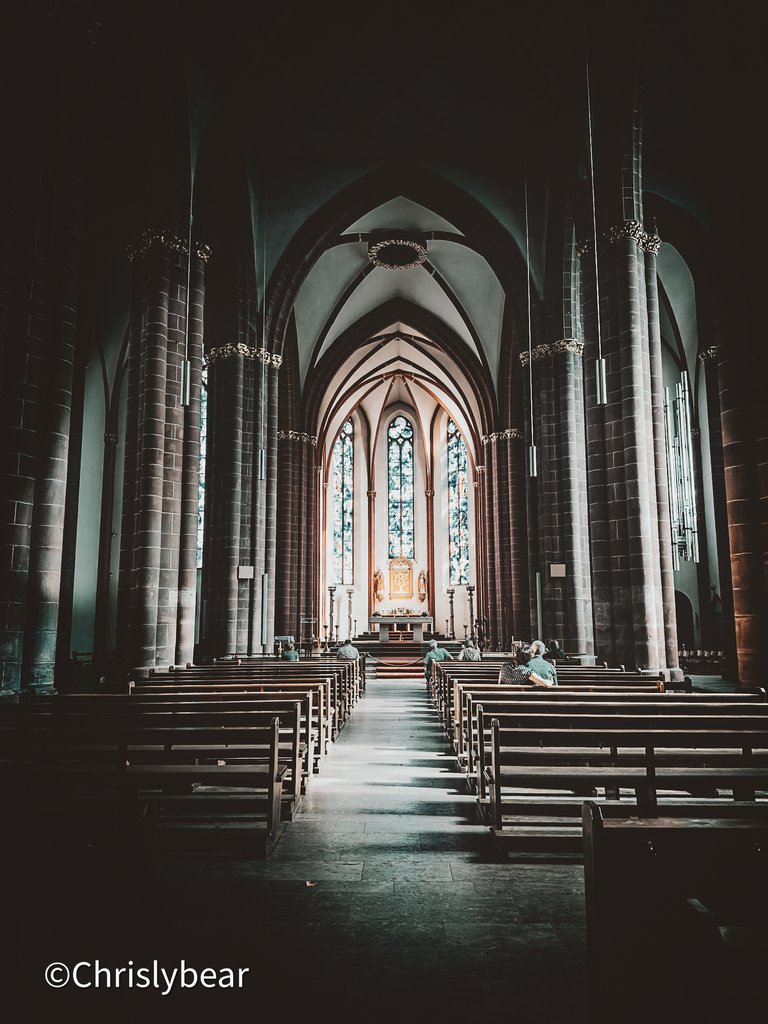

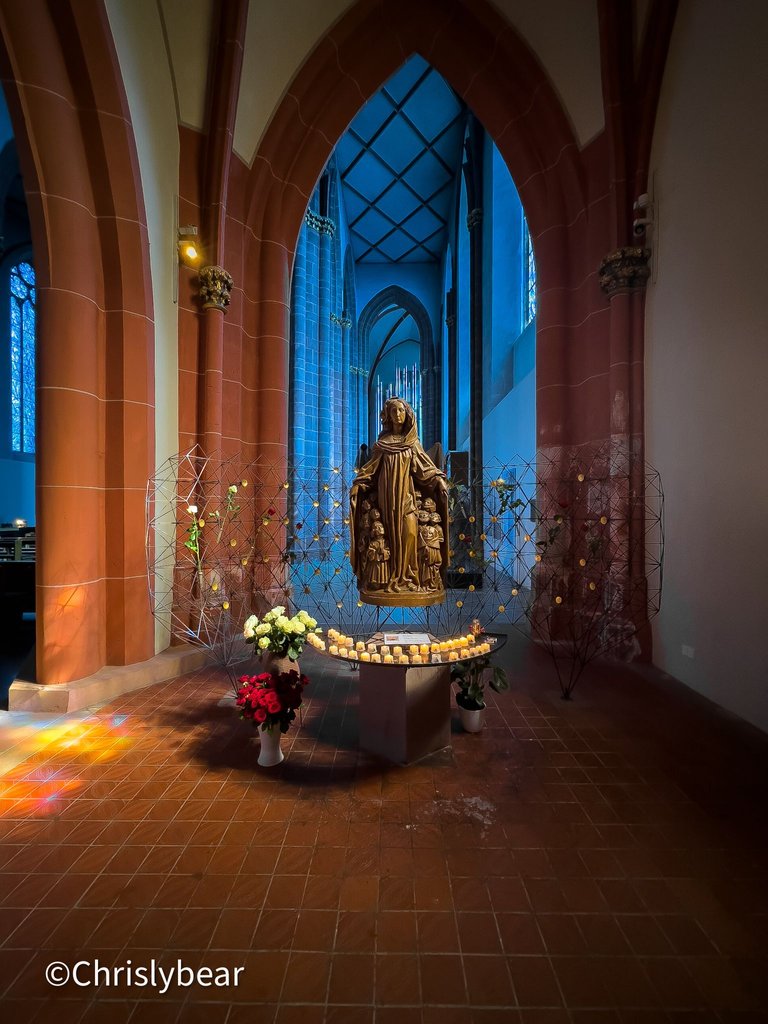

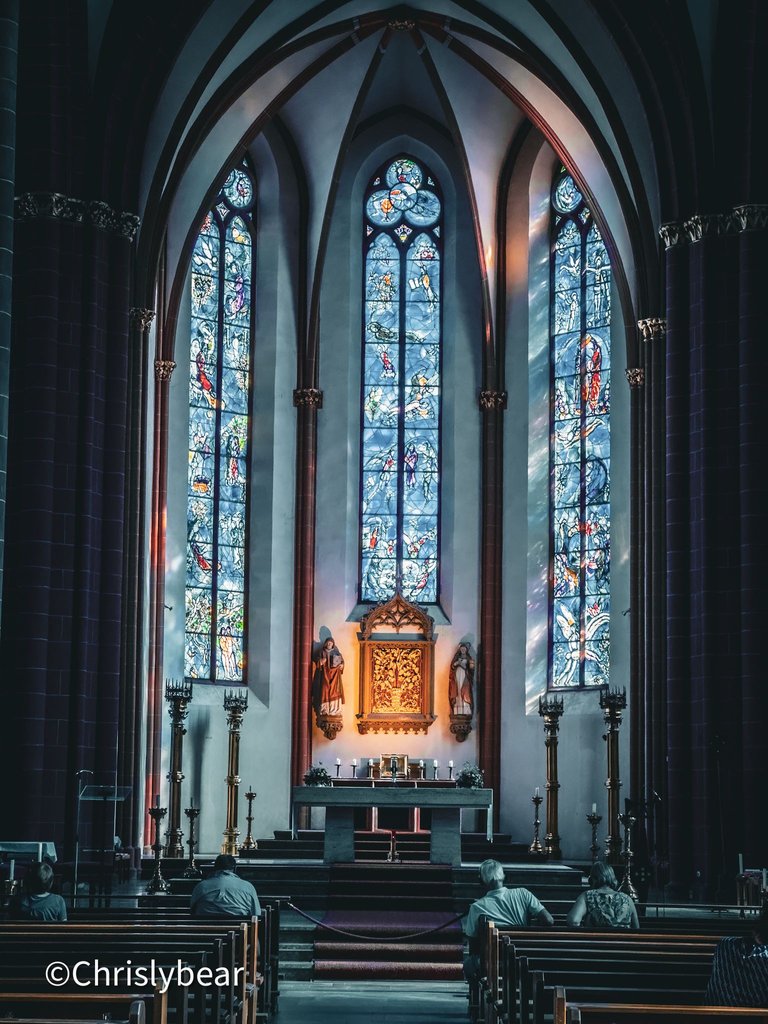
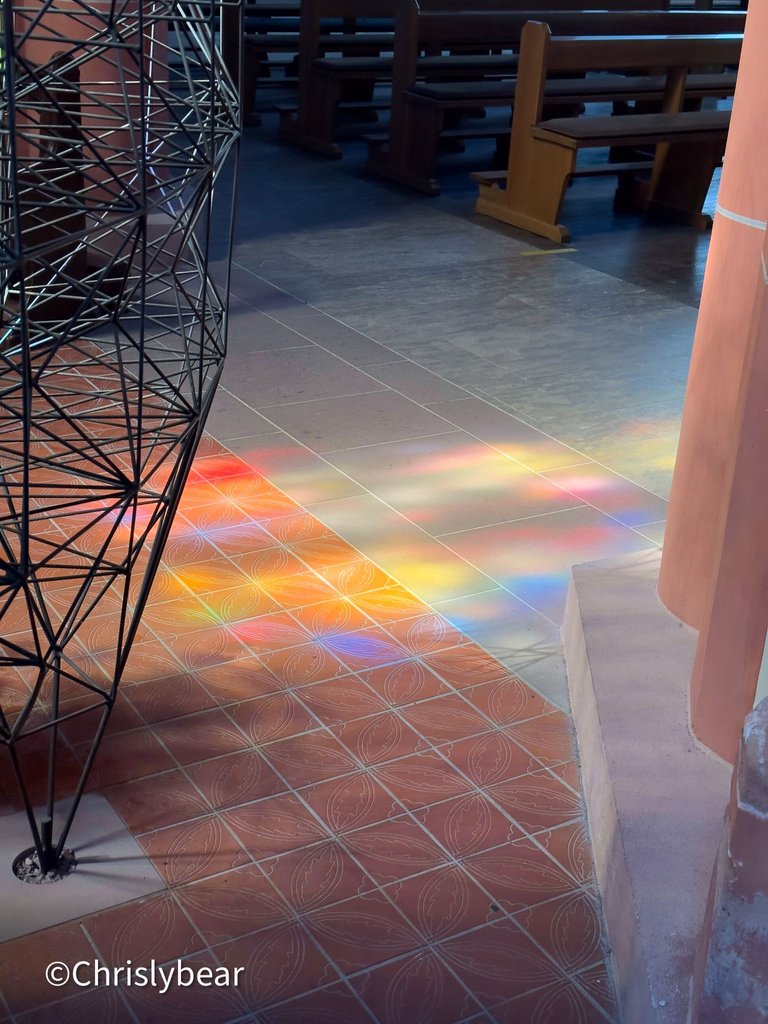
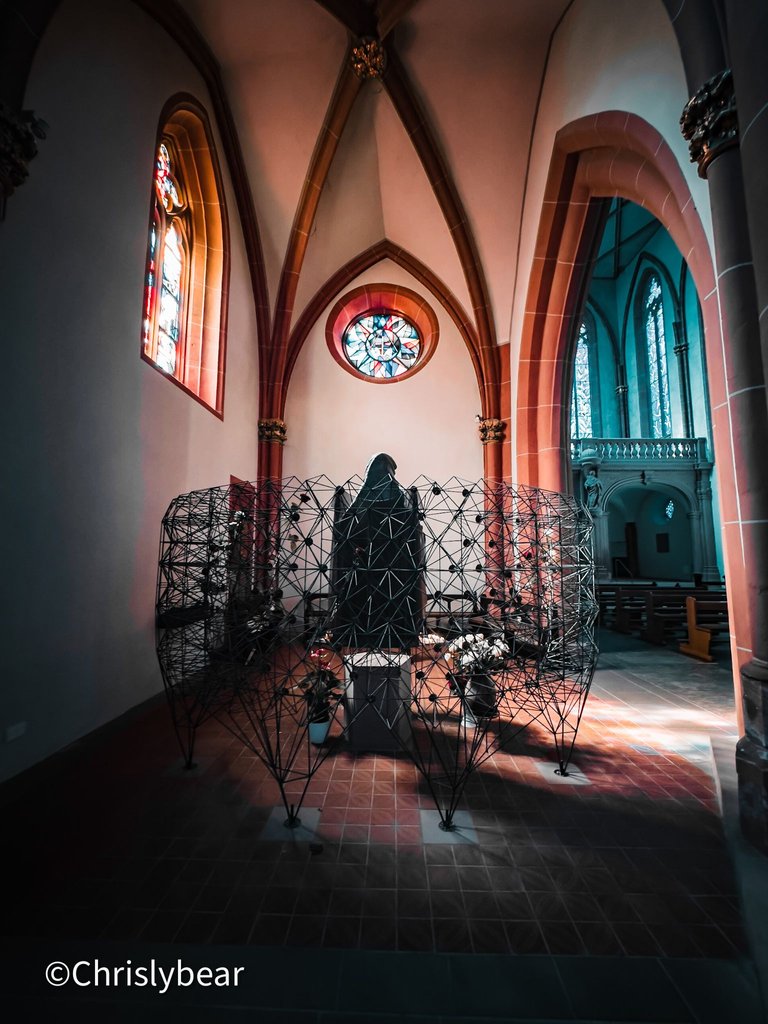
For Desktop-Users: To view in Fullsize click on the Image

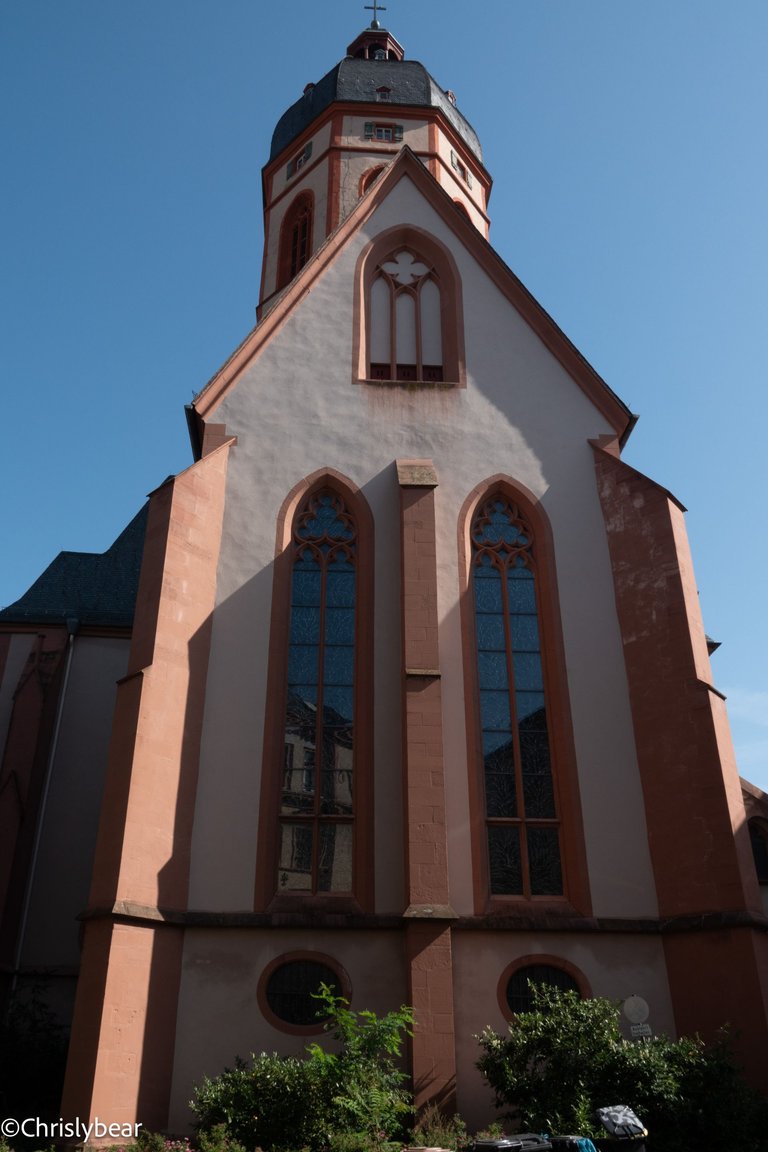

Some time ago, I was in Mainz, not because I had to, but because I wanted to. The "Deutschlandticket" allows for one or another cheap trip, which even works with punctual trains. For those who don't know what the "Deutschlandticket" is, you pay 49€ a month and can use all public transport in Germany in 2nd class - I still wonder how long this will be possible, but I enjoy it as long as it is.
Mainz has a quite famous cathedral, but that's not what today's about. My city tour took me to St. Stephen's Church in Mainz. It was destroyed in 1945 and rebuilt. The entrance door has the rough history of the church stamped? (I'm not sure what the correct term here is.) The church was founded around 1000, renewed in the Gothic style in 1338, destroyed on February 27, 1945, and restored in 1959.
When you enter the church, it first seems like a typical Catholic church, at least like most that I know from Germany. What makes this church special are the windows designed by Marc Chagall - a very well-known artist of Expressionism. The windows are a symbol of Christian-Jewish unity - Marc Chagall was of Jewish faith.
The windows are very color-intensive and flood the church with warm colors, which can be seen on the floor in different spots in the church depending on the position of the sun. When I was in the church, the sun stood so that the colors were directly next to the statue of Saint Mary. This was the first time I perceived so much "warmth" in a church. I don't often go to churches, but I like to see what was built centuries ago or rebuilt after the war, as was the case here.
Under the picture of the Crucifixion of Jesus stands a bust of Saint Willigisus - he is the founder of St. Stephen's Church and is also buried in it. Around 1857, however, a powder tower explosion destroyed parts of the church and also the grave of Willigisus. Thanks to a generous donor, parts of the grave were salvaged, and the remains are stored in this bust. What you can't see in the photo: The area is cordoned off. Not insurmountably cordoned off, but with red ropes at hip height.
Overall, I was in the church for about 10 minutes, certainly much too short for church fans, but for me to get a small impression (and with time pressure to quickly explore the city) just right.



Voreiniger Zeit war ich in Mainz, nicht weil ich musste, aber weil ich wollte. Das Deutschlandticket ermöglicht die ein oder andere günstige Reise, die sogar mit pünktlichen Zügen funktioniert. Wer nicht weiß was das Deutschlandticket ist, man bezahlt 49€ im Monat und kann in Deutschland alle Verkehrsmittel des Nahverkehrs in der 2.Klasse benutzen - ich frage mich bis heute wie lange das noch möglich sein wird, aber ich genieß es solange es möglich ist.
Mainz hat einen recht berühmten Dom, aber um den soll es heute nicht gehen. Mein Städterundgang hat mich zur St. Stephans Kirche in Mainz geführt. Diese wurde 1945 zerstört und wieder aufgebaut. Die Eingangstüre hat die grobe Geschichte der Kirche eingestanzt? (Bin mir nicht sicher was der richtige Begriff hier für ist.) Die Kirche wurde um 1000 gegründet, 1338 im Sinne der Gotik erneuert, 27. Februar 1945 zerstört und 1959 wiedererstellt.
Wenn man die Kirche betritt, wirkt sie erstmal wie eine ganz normale katholische Kirche, zumindest wie die meisten die ich aus Deutschland kenne. Was diese Kirche besonders macht sind die Fenster designed von Marc Chagall - ein sehr bekannter Künstler des Expressionismus. Die Fenster sind ein Zeichen der christlich-jüdischen Verbundenheit - Marc Chagall war jüdischen Glaubens.
Die Fenster sind sehr farbintensiv und fluten die Kirche mit warmen Farben, die je nach Stand der Sonne an verschiedenen Punkten in der Kirche auf dem Boden zusehen sind. Zur Zeit als ich in der Kirche war, stand die Sonne so, dass die Farben direkt neben der Statue der heiligen Maria zu sehen waren. Das war für mich das erste Mal, dass ich in einer Kirche, so "viel" wärme wahrgenommen habe. Ich bin nicht häufig in Kirchen, ich schau mir aber wenn ich in Städten bin gerne mal an, was man vor Jahrhunderten erbaut hat bzw. nach dem Krieg wieder aufgebaut hat, so wie es hier der Fall war.
Unter dem Bild der Kreuzigung Jesu steht eine Büste des heiligen Willigisus - dieser ist der Gründer der Kirche St. Stephan und ist in dieser ebenfalls Begraben. Um 1857 gab es jedoch eine Pulverturm explosion die Teile der Kirche zerstörten und auch das Grab von Willigisus zerstörten. Durch einen großzügigen Spender wurden Teile des Grabes geborgen und die Überreste in dieser Büste aufbewahrt. Was man auf dem Foto nicht erkennen kann: Der Bereich ist abgesperrt. Nicht unüberwindbar abgesperrt, aber mit roten Seilen auf Hüfthöhe.
Insgesamt war ich ca. 10 Minuten in der Kirche, für Kirchenfans sicherlich eine viel zu kurze Zeit, aber für mich um einen kleinen Eindruck zu gewinnen (und mit Zeitdruck die Stadt schnell zu erkunden) genau richtig.

Falls dir meine Beiträge gefallen, vielleicht möchtest du mir bei HIVE.VOTE folgen. Darüber würde ich mich riesig freuen 😊
If you like my posts, maybe you would like to follow me at HIVE.VOTE. That would make me very happy 😊
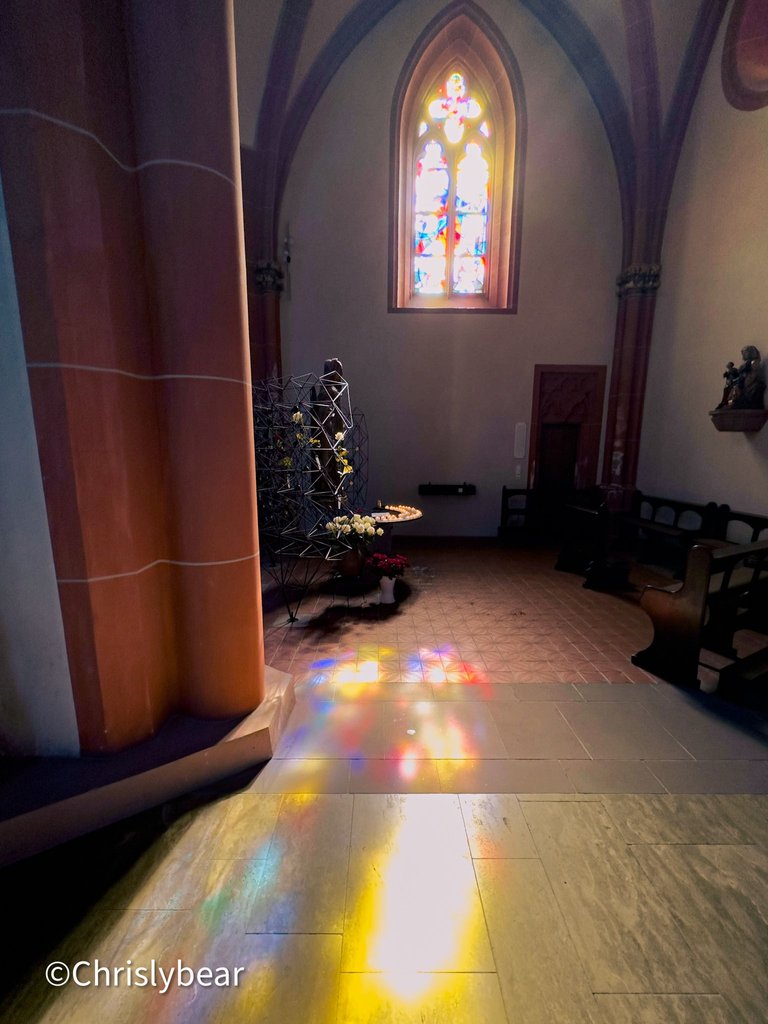

Congratulations, your post has been added to Pinmapple! 🎉🥳🍍
Did you know you have your own profile map?
And every post has their own map too!
Want to have your post on the map too?
Congratulations @chrislybear! You have completed the following achievement on the Hive blockchain And have been rewarded with New badge(s)
Your next target is to reach 2000 comments.
You can view your badges on your board and compare yourself to others in the Ranking
If you no longer want to receive notifications, reply to this comment with the word
STOPCheck out our last posts:
Congratulations @chrislybear! You received a personal badge!
Wait until the end of Power Up Day to find out the size of your Power-Bee.
May the Hive Power be with you!
You can view your badges on your board and compare yourself to others in the Ranking
Check out our last posts: